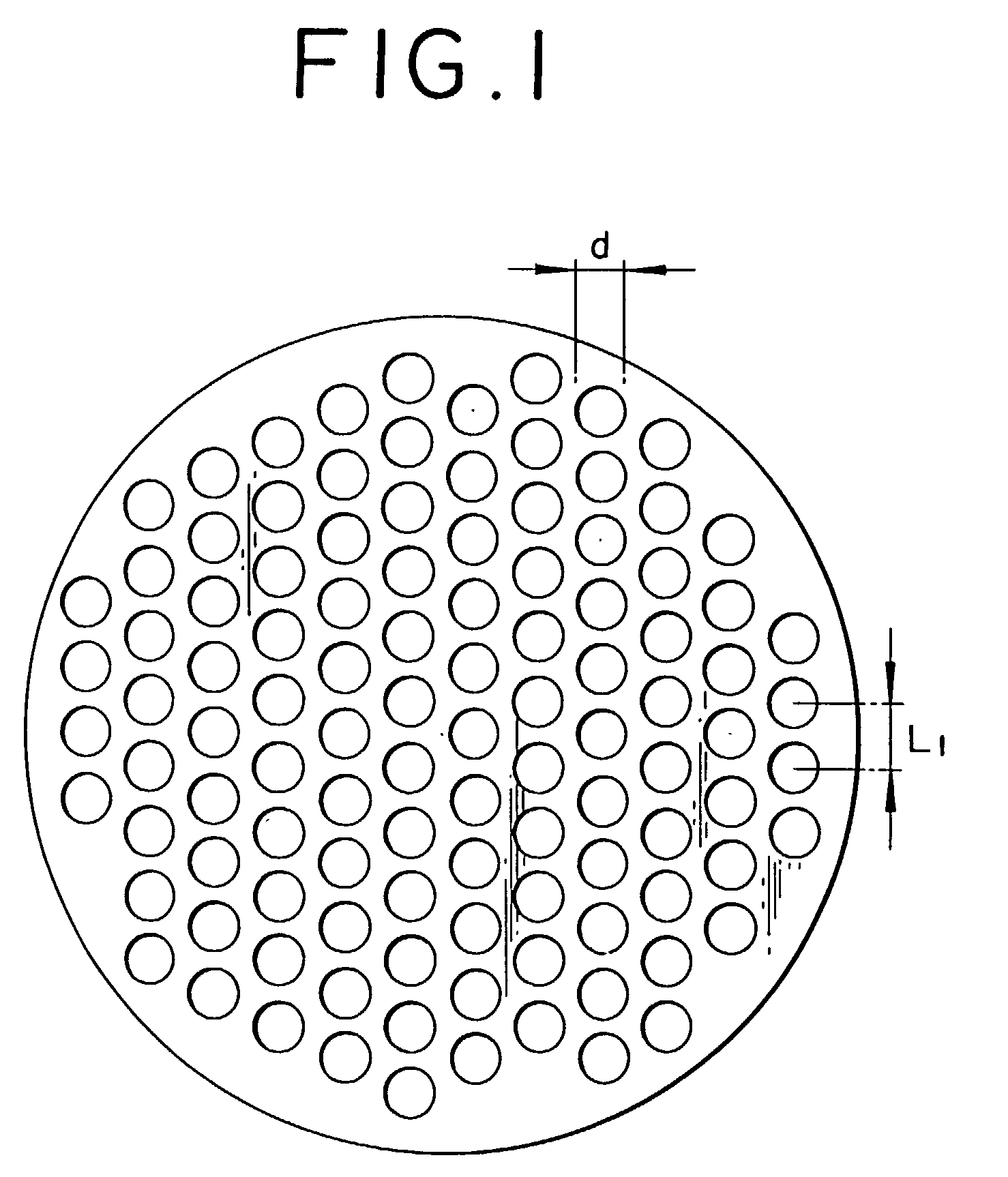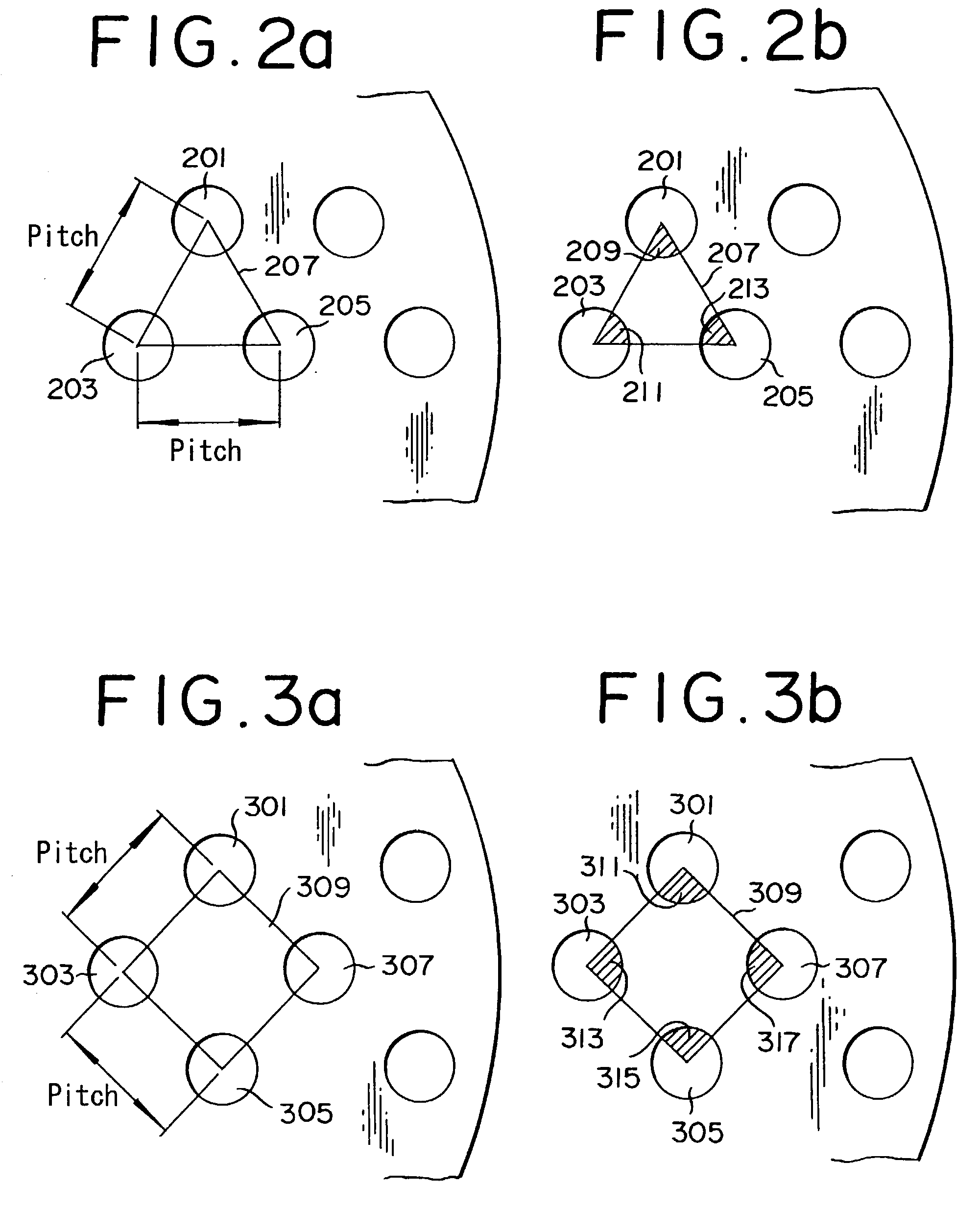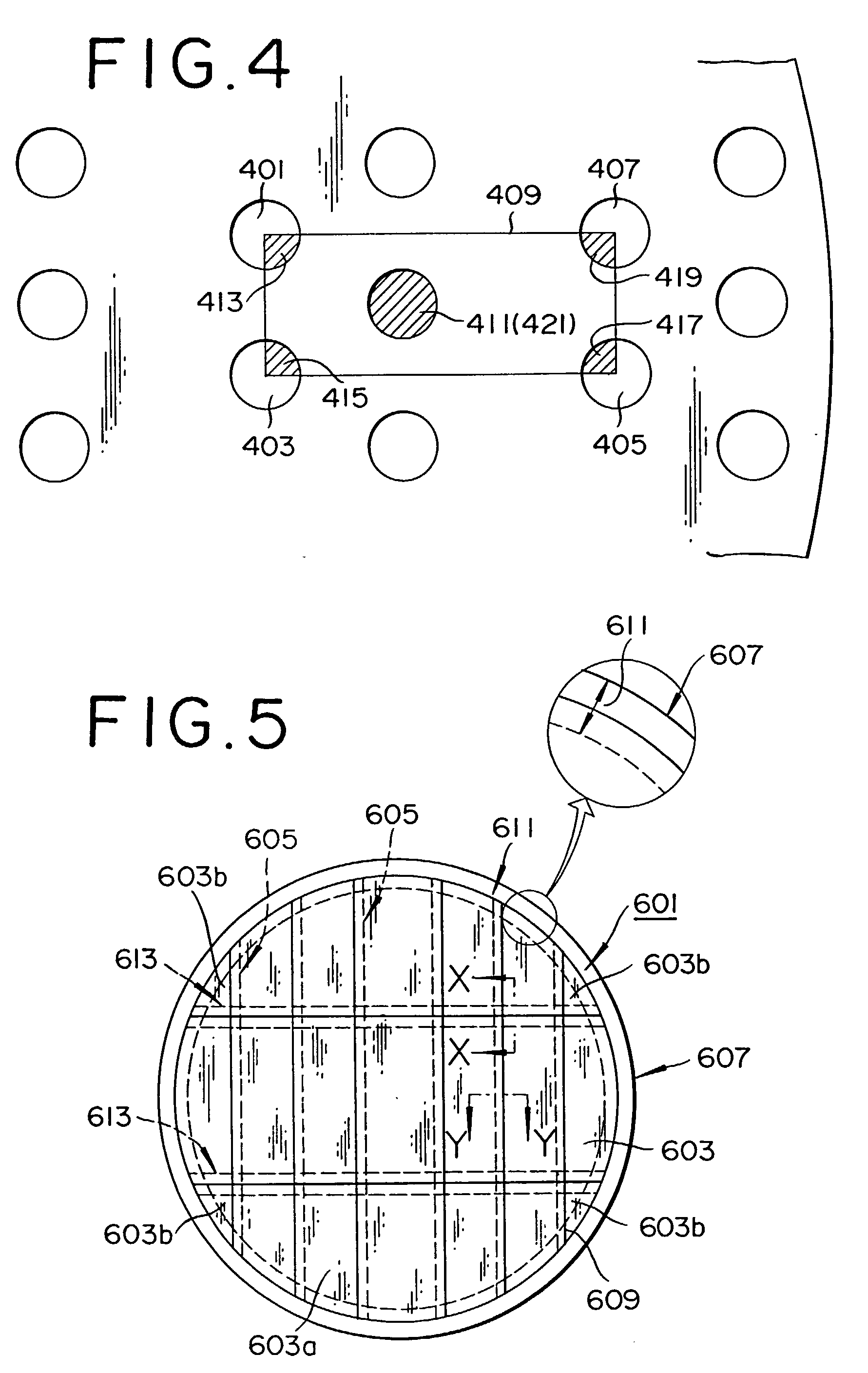Thus, a discrepancy arises between an actual opening ratio of the perforated tray of the column and an opening ratio of holes per unit area of the perforated tray.
When a perforated tray column without downcomer formed by setting in place such perforated trays without downcomer as revealing this discrepancy in an unduly large magnitude is used in distilling (
meth)
acrylic acid, for example, it encounters the problem that the efficiency of separation in the operation of
distillation is lowered as compared with a counterpart having a smaller discrepancy.
When the discrepancy is large, the distillation of (meth)acrylic acid, for example, performed with the
wireless perforated tray column formed by setting in place perforated trays without downcomer of this large discrepancy entails the problem that since the operation possibly forms a
polymer, it must be suspended to allow artificial or chemical removal of the
polymer from the column.
They, however, have been unable to discover a means which is effective in decreasing the discrepancy itself which arises between an actual opening ratio of the perforated tray of the column and an opening ratio of holes per unit area of the perforated tray.
If the (A) / (B) ratio mentioned above falls short of 1.1, the shortage will render it difficult to manufacture a perforated tray without downcomer formed of a plurality of divided tray segments.
If the
diameter of hole d falls short of 10 mm, the shortage will be at a
disadvantage in not allowing easy drop of a liquid through the holes and suffering a compound to polymerize easily.
Conversely, if this diameter of hole exceeds 25 mm, the excess will be at a
disadvantage in suffering a liquid to stagnate on the tray because of an unduly
large distance between holes and also suffering a compound to polymerize easily.
If the thickness of this tray falls short of 2 mm, the shortage will be at a
disadvantage in suffering the liquid on the perforated tray without downcomer to be sloped by a vibration generated in the tray and to be easily dried partly.
Conversely, if this thickness exceeds 8 mm, the excess will be at a disadvantage in inducing a liquid to stagnate within the holes and undergo
polymerization easily.
When the holes are assumed to have a fixed diameter and if the opening ratio (B) based on the diameter of a column falls short of 10%, this shortage will be at a disadvantage in inducing the liquid on the tray to stagnate and undergo
polymerization easily.
If the opening ratio (B) based on the diameter of a column exceeds 30%, the excess will be at a disadvantage in suffering the liquid on the tray to be deteriorated in the state of fluidity and to be easily polymerized.
Heretofore, this control has been usually difficult to accomplish.
If the diameter of the liquid holes or notched holes falls short of 10 mm, the shortage will be at a disadvantage in suffering the liquid to stagnate inside the liquid holes and induce easy
polymerization because the joining part has a thickness twice as large as the other part or in suffering the liquid to stagnate in the joining part, incur difficulty in flowing down through the liquid hole or notched hole, and induce polymerization easily.
If the
pitch between the centers of the adjacent liquid holes or notched holes in the joining part exceeds 400 mm, the excess will be at a disadvantage in disabling acquisition of an area necessary for allowing the liquid collecting in the joining part to flow down quickly and consequently suffering the liquid to stagnate for a comparatively long time in the joining part and incur easy polymerization.
Conversely, if the
pitch between the centers of liquid holes or notched holes in the joining part falls short of 50 mm, the shortage will be at a disadvantage in suffering the joining part to reveal deficiency in the strength for allowing attachment of relevant parts thereto and consequently rendering manufacture of the perforated tray without downcomer difficult.
The liquid holes on the support beam side have the possibility of eventually incurring deviation of their positions when the perforated tray is fitted to the support beam.
If the distance H which separates the perforated trays without downcomer 1001 disposed in the vertical direction in the perforated tray column without downcomer 1003 falls short of 0.1D namely 10% of the diameter of the column, the shortage will be at a disadvantage in suffering the gas to channeling and consequently inducing the compound being distilled to polymerize easily.
If this distance exceeds 0.5D namely 50% of the diameter of the column, the excess will be at a disadvantage in unduly lengthening the
retention time of the gas and inducing the compound being distilled to polymerize easily in the
gas phase part.
If the tolerance of horizontality of the perforated trays without downcomer 1001 exceeds 8 mm, the excess will be at a disadvantage in increasing the tradient of a liquid on the perforated tray without downcomer 1001, aggravating the channeling of a gas or a liquid, and suffering the polymerization to occur easily.
If the centers of the holes of a perforated tray without downcomer which approximate closely to the support member fall further inside the hole 1107c, they will bring such disadvantages as impairing the flow of a fluid near the wall of a column, preventing the cross section of the column from being wholly utilized effectively, and tending to degrade the efficiency of the column and induce polymerization of a compound being distilled.
Conversely, if the holes under discussion are arranged on the outer sides of the holes 1107a, they bring such disadvantages as increasing the number of holes blocked up by the support ring and causing the liquid to stagnate in the holes and succumb easily to polymerization.
If this width falls short of 20 mm, the shortage will be at a disadvantage in failing to support the tray fully satisfactorily.
If the width exceeds 100 mm, the excess will be at a disadvantage in decreasing the available cross section of the column and, at the same time, impairing the flowability of a gas and a liquid along the wall part of the column and inducing easy polymerization of the compound being distilled.
 Login to View More
Login to View More 


